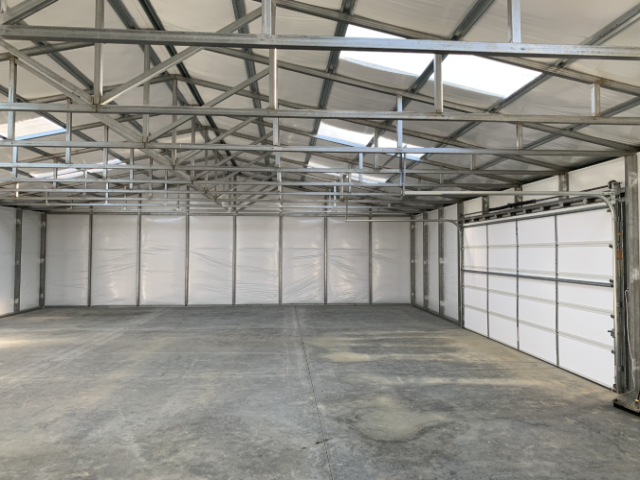Metal buildings are revolutionizing the way we think about sustainable construction. As the demand for greener, more efficient building practices grows, metal structures are stepping into the spotlight for their eco-friendly advantages. From their energy efficiency to their recyclability, these buildings offer a smart, forward-thinking solution for reducing environmental impact.
What makes metal buildings a top choice for green construction? Their durability minimizes the need for frequent repairs, while innovative design options can incorporate renewable energy systems like solar panels seamlessly. Additionally, metal’s high recyclability reduces waste, making it a sustainable material that contributes to a circular economy.
What Makes Metal Buildings An Eco-friendly Choice For Construction?
Metal buildings have a reputation for being eco-friendly, and for good reason. They are built with materials that contribute to a lower carbon footprint and offer numerous advantages when it comes to sustainability. Here are the key factors that make metal buildings an eco-friendly choice for construction:
- Energy Efficiency: Metal buildings are highly energy-efficient due to their insulation properties. Many metal buildings incorporate advanced insulation techniques, such as reflective coatings, which reduce the need for heating and cooling. This leads to reduced energy consumption and lower utility bills over the building’s lifetime.
- Durability: Metal is a highly durable material that can withstand harsh weather conditions such as high winds, heavy snow, and even earthquakes. This longevity reduces the need for frequent repairs and replacements, which can be resource-intensive and costly. Fewer repairs and replacements mean fewer materials are needed, reducing the overall environmental impact of the building.
- Lower Embodied Carbon: The production of metal components for buildings, particularly steel, has a lower carbon footprint compared to traditional construction materials like concrete and brick. Steel, for example, requires less energy to manufacture and is much lighter than concrete, which makes it easier to transport and reduces the emissions associated with transportation.
- Minimal Waste: Metal buildings are designed to be constructed with precision, which reduces waste. The materials used are often cut and fabricated to exact specifications, reducing excess material and waste produced during the construction process. The ability to create precise and standardized components minimizes the environmental impact of the construction process.
How Do Metal Buildings Contribute To Energy Efficiency In Green Construction?
One of the most significant benefits of metal buildings is their ability to contribute to energy efficiency in green construction. Energy-efficient buildings reduce the need for excessive heating and cooling, which lowers energy consumption and reduces carbon emissions. Here’s how metal buildings excel in this area:
- Reflective Coatings and Insulation: Metal roofs are often coated with reflective materials that help bounce back solar radiation, keeping the building cooler in summer. This reflective surface helps reduce the demand for air conditioning, which is a significant energy consumer. Metal buildings also benefit from superior insulation materials that keep the internal temperature stable throughout the year, improving heating efficiency in the winter.
- Optimal Ventilation: The design of metal buildings allows for better airflow and ventilation, which helps regulate temperature without relying heavily on HVAC systems. With strategically placed vents and open-air designs, metal buildings reduce the need for artificial cooling systems and maintain comfortable indoor conditions naturally.
- Daylighting: Many metal buildings incorporate large windows or translucent panels into their design, allowing for natural light to penetrate the interior. By using natural light during the day, metal buildings reduce the need for artificial lighting, which cuts down on electricity consumption. This “daylighting” strategy helps conserve energy, lower operational costs, and reduce the building’s carbon footprint.
- Solar Panel Integration: Metal roofs are perfect for integrating solar panels. Their smooth, sturdy surface provides an excellent base for solar power systems, which can generate clean energy on-site. Solar energy helps reduce reliance on fossil fuels, making metal buildings an even more sustainable choice for green construction.
Can Metal Buildings Be Recycled Or Repurposed For Sustainable Use?
One of the most notable aspects of metal buildings is their recyclability. Unlike other construction materials like wood or concrete, metal is highly recyclable and can be reused without losing quality. Here’s how metal buildings contribute to sustainability through recycling and repurposing:
- Recycling Steel: Steel is one of the most recycled materials in the world. According to the Steel Recycling Institute, more steel is recycled annually than paper, aluminum, glass, and plastic combined. When metal buildings reach the end of their life cycle, the steel used in their construction can be fully recycled to create new steel products. This reduces the need for raw materials, lowers energy consumption, and prevents excess waste from going to landfills.
- Repurposing Materials: In addition to recycling, many metal building components can be repurposed for other uses. For example, metal panels, beams, and framing can be repurposed for new construction projects, agricultural buildings, or even residential spaces. Repurposing these materials reduces the need for new raw materials and extends the lifespan of the metal, minimizing waste.
- Closed-Loop System: Because metal is 100% recyclable, the process of recycling metal from old buildings can create a closed-loop system where metal is continually reused without requiring significant additional resources. This sustainable practice helps reduce the environmental impact of construction and deconstruction, making metal buildings one of the most environmentally-friendly choices in the industry.
- Reduction of Construction and Demolition Waste: By using metal, which is easy to remove, recycle, or repurpose, metal buildings reduce the waste produced during demolition. When a building is no longer in use, it is much easier to recycle the steel components rather than send them to a landfill, reducing the overall construction waste.
What Role Do Metal Buildings Play In Reducing Construction Waste?
Reducing construction waste is a crucial goal in the quest for greener building practices. Traditional construction methods often produce significant amounts of waste, such as leftover wood, concrete, and drywall. Metal buildings, however, play a crucial role in minimizing waste in several ways:
- Precision Manufacturing: Metal building components are typically pre-fabricated in factories to exact specifications. This means there is minimal waste on the job site, as parts are cut and shaped according to precise measurements. The manufacturing process of metal components generates very little scrap compared to traditional building materials.
- Modular Design: Many metal buildings are designed with modular components, which can be assembled and disassembled with minimal waste. This flexibility allows for future modifications or relocations without generating excess debris or requiring significant demolition work. Modular designs make it easier to reuse or repurpose parts of the building in the future, reducing the need for new materials.
- Minimal Site Preparation: Metal buildings are often easier and quicker to assemble, reducing the overall impact of construction on the surrounding environment. Because the materials are lightweight and pre-engineered, the process requires less site preparation and excavation, which reduces the potential for soil disturbance and erosion.
- Lower Impact on the Environment: When constructing a traditional building, waste is often left behind on-site, resulting in a considerable environmental impact. Metal buildings, however, can be assembled with minimal disruption to the environment. In addition to reducing waste, the rapid assembly process means that less time is spent using heavy machinery, which reduces energy consumption and pollution.
Metal buildings are leading the charge in green construction by offering an array of environmental benefits that traditional construction methods simply cannot match. From their energy-efficient designs to their recyclability and waste-reduction capabilities, metal buildings are at the forefront of sustainable construction practices.
Whether you’re building a commercial warehouse, a residential home, or an industrial facility, metal buildings provide a versatile, durable, and eco-friendly solution that supports both your environmental goals and your budget.
With the growing emphasis on sustainability in the construction industry, metal buildings offer an exciting opportunity to build responsibly while minimizing your environmental footprint. By choosing metal as a construction material, you’re not only making a smart financial decision but also contributing to a more sustainable future.
Why Choose Better Built Structures for Your Metal Building Needs
At Better Built Structures, we are proud to lead the way in eco-friendly, sustainable metal building solutions. With years of experience and a commitment to excellence, we specialize in providing high-quality metal buildings that not only meet your functional needs but also contribute to a greener environment. Our team of skilled professionals ensures that every project is tailored to your specific requirements, combining energy efficiency, durability, and aesthetic appeal.
We use only the best materials and the latest construction techniques, ensuring your metal building is built to last. From residential to commercial and industrial projects, we provide innovative and sustainable solutions that are both cost-effective and environmentally responsible. With our attention to detail, transparent pricing, and dedication to customer satisfaction, Better Built Structures is the top choice for anyone looking to invest in a high-performing, eco-friendly metal building.
Frequently Asked Questions (FAQs)
What is the cost of a metal building?
The cost of a metal building varies depending on factors such as size, design, materials, and location. At Better Built Structures, we provide customized quotes based on your specific needs. Rest assured, we offer competitive pricing and transparent cost breakdowns.
How long does it take to build a metal structure?
Building time depends on the complexity of the design and size of the project. On average, metal buildings can be constructed much faster than traditional buildings, often reducing the overall construction timeline by weeks.
Are metal buildings energy-efficient?
Yes, metal buildings are known for their energy efficiency. With advanced insulation and reflective coatings, they help reduce heating and cooling costs, making them an environmentally-friendly choice.
Get Started Today with Better Built Structures!
Ready to build your sustainable, energy-efficient metal structure? Contact Better Built Structures today for a personalized quote and start your project with the most trusted name in metal building construction. Let us help you create a structure that is both functional and eco-friendly!






